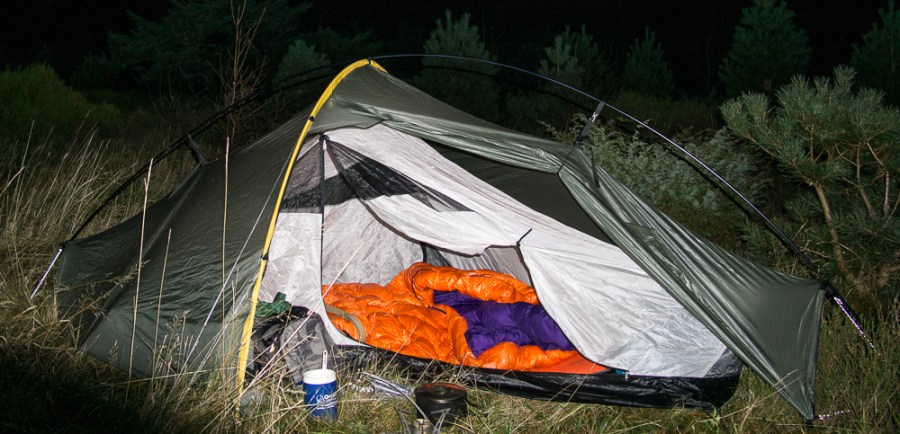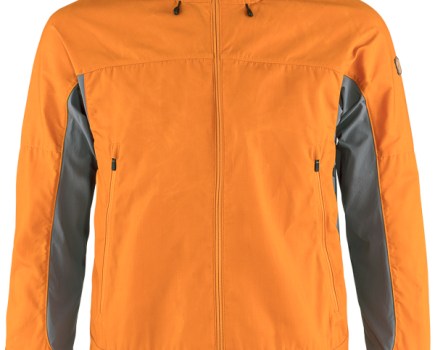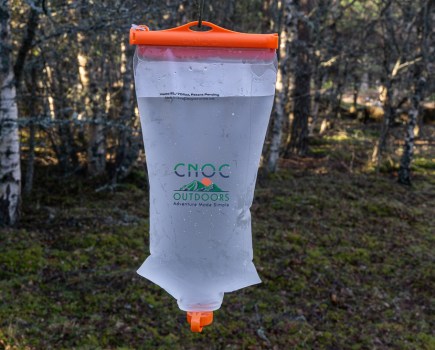An excellent ultralight solo tent
Tarptent’s Moment began life as a single-walled ultralight solo tent a decade ago. Designer Henry Shires did the TGO Challenge with it in 2010 and based on that trip and feedback from users changed it to a double-wall tent in 2013, adding a second door as well as an inner.
Since last autumn I’ve been trying the 2019 version of the Moment DW. Tarptent say this has been improved with a lower fly edge, two-way water-resistant zips on each vestibule, re-engineered arch geometry, additional guyline attachment points, a smaller footprint and a stiffer arch pole. How much difference these make compared to previous versions I can’t say as I’ve never used a Moment before. I can say that based on my usage so far this is an excellent solo shelter.
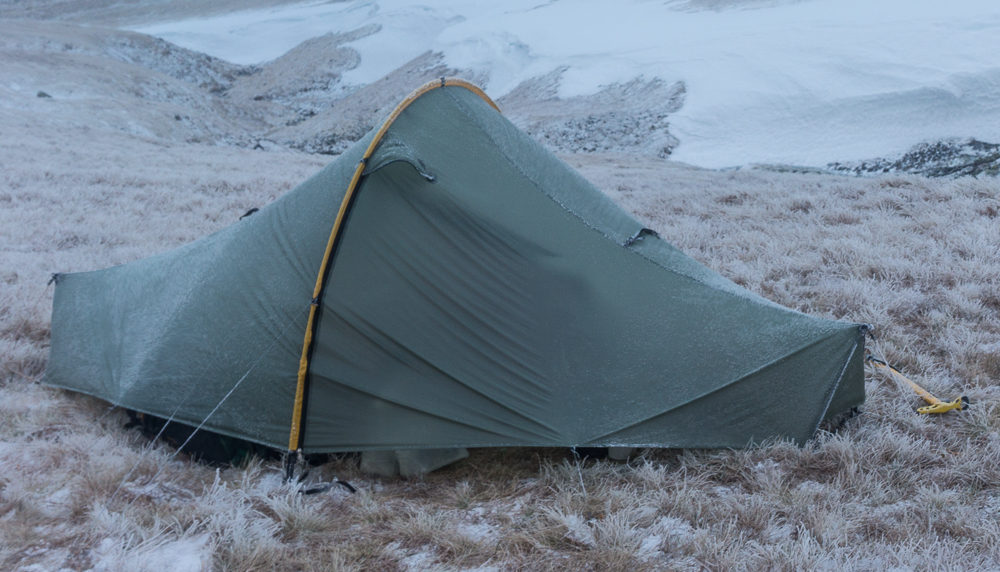
The single hoop design has become almost standard for lightweight solo backpacking tents in recent years. What the Moment adds to the design is two entrances and vestibules rather than one, triangular rather than upright end poles, and the option of a crossing pole for snow load and to make the tent free-standing.
The Moment flysheet and groundsheet are made from 30d silicone coated nylon with a 3,000mm hydrostatic head. The seams aren’t sealed as standard. You can do this yourself or pay $35 to have it done by Tarptent.
The Moment is available with a solid inner with mesh panels or an all mesh inner and with an aluminium or carbon-fibre pole. The test model has the solid inner and aluminium pole and weighs 1.088 grams. The tent comes with two pegs weighing 12 grams, which is all you need to pitch it. If you use the crossing pole, which weighs 198 grams, you don’t need any pegs at all. If it’s not windy of course. For the best performance in anything more than a light breeze I think a minimum of eight pegs are needed and two long and four short guylines should be added. The long guylines attach to the pole sleeve on either side, the short ones to either side of each vestibule. The latter are particularly useful in keeping the flysheet from blowing against the inner and ensuring there’s enough space for cooking inside. For maximum wind resistance and security another six pegs could be added for each corner and the pole ends. Depending on the type and the number the pegs add 100-200 grams to the weight. The tent comes in a sausage-shaped stuffsack weighing 22 grams. Stuffing it back inside this in a wind with cold hands is not easy and after one trip I substituted a larger stuffsack weighing 33 grams. That gave me a total weight with eight pegs and no crossing pole of 1.22kg and 1.42kg with the crossing pole. That’s light for a tent as roomy as the Moment.
Pitching the Moment is very easy as the fly and inner go up together. It only takes a few minutes even when the crossing pole is used. Fitting both poles can be a bit awkward when wearing gloves, however.
The inner is long enough for a full-length mat and has enough space to bring some gear inside. Headroom in the centre is fine for me at 173cms. The ends are quite low, and care is needed not to push the inner against the outer when you sit up, especially if the latter is damp with condensation.
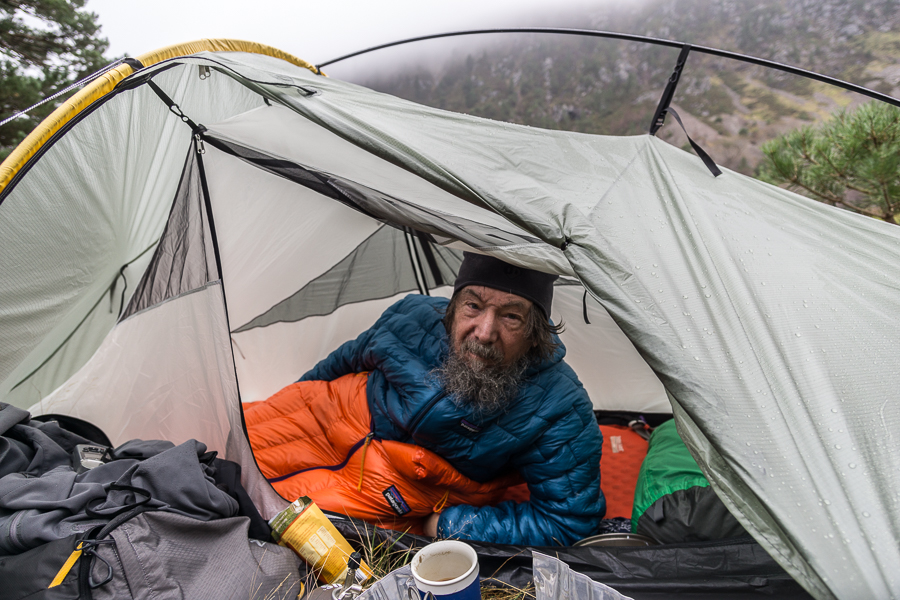
The vestibules can be varied in size by sliding the base of the inner along the tape connecting the two poles. I found having one large vestibule with room for my pack on one side and for cooking on the other and a small one for my boots worked well. If the wind changes direction it’s not very difficult to swap the two around.
Ventilation options are excellent. The tops of both external door zips can be left open even in rain as there are little hoods over them. The end panels can be opened too for good airflow. These don’t seal totally, and I could see spindrift or snow blowing in in really windy weather. The flysheet doesn’t quite reach the ground, which is also good for ventilation but again not so protective against spindrift or snow. To be fair Tarptent doesn’t claim the Moment is a winter tent, just 3+ season. Despite the ventilation options condensation can be copious on the inside of the flysheet and as with any small tent the small size means care is needed to push the inner against the damp flysheet.
I’ve used the Moment on windy nights and it’s proved reasonably stable without much flapping. The triangular ends definitely help with this, as do the additional guylines I added. The crossing pole didn’t make any noticeable difference. In a heavy snowfall I think it would be significant though. The tape loops for the crossing pole are quite noisy when it’s windy as they thrash against the flysheet. One morning there were frost-free patches on the flysheet where these loops had swept away the frost. If you’re not using the crossover pole the tapes can be removed.
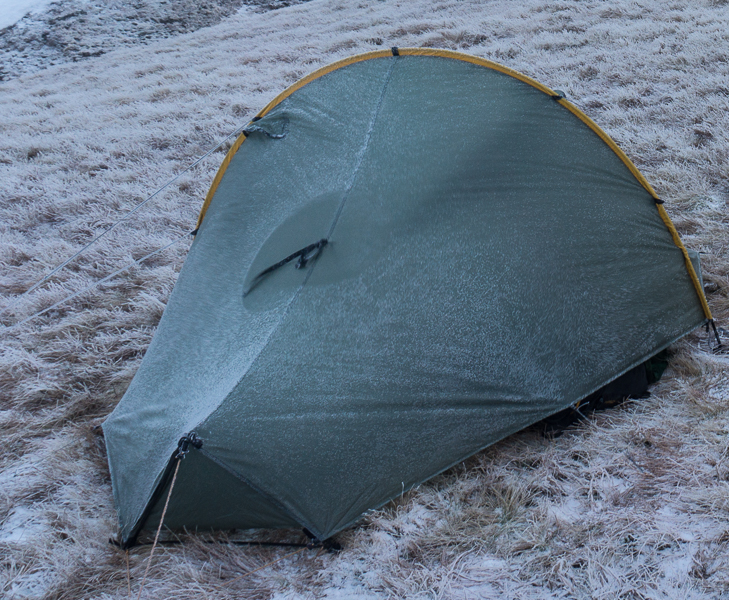
Overall the Moment DW is a good lightweight tent for three-season backpacking. I prefer something a bit roomier for long winter nights but that means more weight of course.
$325 -$506 (c.£253-£394)

